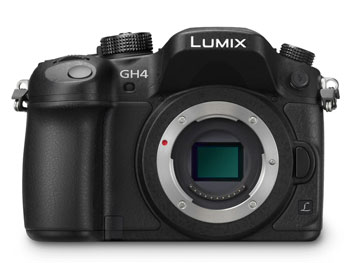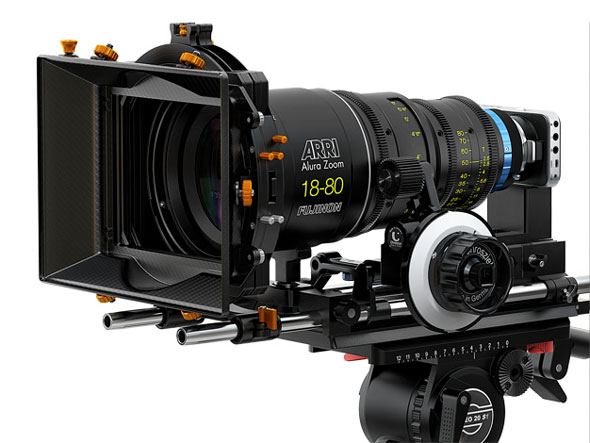Could as well write: professionals never use Micro Four Thirds. There’s a lot of misinformation wandering around the business of technology. Fact is, as we all know, Micro Four Thirds, the pioneer of a truly digital imaging system, has grown into a formidable contender. Be it stills or video, only the practiced eye can tell a smaller from a larger sensor. If at all.
When Olympus introduced the first Four Thirds camera in 2003, the legendary Olympus E-1, Olympus was joined by Kodak and Fujifilm and soon after by Panasonic. Kodak soon was history while Fujifilm never introduced a (Micro) Four Thirds model and went APS-C instead.
But in essence all three followed the same path. A fully digital-dedicated design avoided the image degradation of peripherals and the appearance of ghosts and flares. The linearity of light enables smaller image sensors to capture an image more accurately. That’s at least what marketing promises. Regarding sensor sensitivity, resolution and optics the new standard still had way to go. 11 years ago. Today, there is much more to Micro Four Thirds than just much more compact and lighter bodies than larger-sensor solutions.

EVF is not yet perfect, but we’re getting there, and the native lens selection has grown to a impressive offering, including fast and well-built, weather-sealed zoom and prime lenses. Still not satisfied? Then, to be honest, nothing will satisfy you.
Interestingly, the only difference between the original Four Thirds and Micro Four Thirds introduced in 2008 was a new flange distance between the lens mount and sensor at 20mm, roughly half the distance of the previous Four Thirds mount. Thanks to live view, the reason behind the move to Micro Four Thirds was that the bulky mirror box system and viewfinder could finally be removed.
Et voilà, that was the birth of the “mirrorless” design that many new cameras now feature as standard. Fujifilm’s X series and Sony’s E mount follow the same concept while Sony’s A mount is a kind of legacy compromise. Thanks to the undeniable popularity of Micro Four Thirds with photographers and videographers alike, a number of third-party lens manufacturers are also releasing high quality lenses, including Schneider-Kreuznach, Leica, Kowa, Mitakon, SLR Magic, Voigtländer Cosina, Tamron, Samyang/Rokinon and Sigma.
There are a few quirks with the format, however, if you’re coming from a larger sensor format. Because of the short flange distance and small sensor, wide angle and macro lenses are few and far between. Thanks to the 2.0x magnification of both Four Thirds and Micro Four Thirds sensors relating to the 35mm equivalent, available focal lengths are effectively “doubled.” So, even the widest Micro Four Thirds lenses aren’t as wide as they say.
Takes some getting used to, and while there’s no denying how amazing the image quality is, all other considerations being equal, larger sensors, rightly used, still result in superior image quality because they gather more light while at the same time offering a larger area on the sensor for bigger pixels and better resolution.
Only, is the average human eye capable of spotting the difference? Differences in image quality between systems have become mitigated by advancing technologies over the years. ISO options in Micro Four Thirds are mostly only a stop or two shorter of larger-sensor cameras. The right post-processing is the great equalizer, so in the end apples might very well become oranges.
This still doesn’t make up for the smaller sensor’s extended depth of field over the same aperture on a larger sensor. If you absolutely need the shallowest of depth of fields, then don’t deny the benefits of a larger sensor size. For macro though Micro Four Thirds is a blessing thanks to the deeper depth of field.

On the flip side, this is an advantage for video because focusing becomes much easier with the larger hyperfocal distance. Blackmagic Design has taken note of this feature, they offer Micro Four Third mounts for their Pocket Cinema Camera and Cinema Camera, as well as their brand-new professionally oriented Studio Camera. Lens possibilities include a huge variety of modern and classic lenses from Panasonic, Leica, Voigtländer Cosina, Contax, Pentax, Canon, Nikon and many more. A litany of adapters are available from Dot Line, Metabones, Novoflex, Voigtländer Cosina, Bower, Vello, Phottix, Pro-Optic, Zeiss, Fotodiox and, of course, Olympus and Panasonic.
While they cost nearly $800, 16×9 Inc. and Chrosziel even make Micro Four Thirds mounts that will allow you to use huge PL mount cinema lenses on tiny Micro Four Thirds cameras. Kind of smashing the cute belief, isn’t it, that small things are for small, nonprofessional people only.


